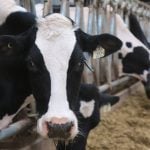Seven years ago, none of Liz Isaak’s farm clients filed tax credit claims under the federal Scientific Research and Experimental Development program. Few had even heard of it.
Like all farmers, her clients were constantly testing new genetics, finding new ways to make their machinery work better, and exploring new production systems. In other words, they were constantly engaged in their own R&D, says Isaak, head of Deloitte Touche’s ag practice for southwestern Ontario, and member of the company’s national ag group.
Read Also

Producers aren’t panicking over tariffs and trade threats
The Manitoba Canola Growers Association (MCGA) surveyed its members this spring to get a sense of how trade uncertainty was…
But, could they file claims under Ottawa’s main incentive program for Canadian research and development?
Companies across the Canadian economy rely on the SR&ED program, including virtually every major company that sells to farmers, whether they’re equipment makers, grain companies or seed breeders. But could farmers file claims too?
At accountants’ offices across the country, it wasn’t so much that the answer was “no” as it was that the question never got asked.
Then, Deloitte Touche and a small handful of other accounting firms with major non-farm clients started to ask: if farmers are doing R&D, can they make claims? The firms called in their non-farm SR&ED specialists to take a harder look.
Today, says Sheri Penner, senior SR&ED manager for Deloitte Touche in southwestern Ontario, along with her list of non-farm clients, she is routinely helping farmers file claims that average $100,000 per company, and that range from a low of $20,000 to a high of nearly $500,000.
In her corner of the province alone, the number of farmers filing SR&ED claims through Penner’s team is already approaching 100, covering the full range of commodities from fruit to livestock.
It should be an even bigger number, Penner says, probably a much bigger number.
But there’s no two ways about it. The SR&ED tax credit system is friendlier to large farms.
“At the very least, if you’re an incorporated farm with $1 million in sales, you should be talking to professionals who are familiar with SR&ED,” Penner says. “When I talk to farmers, I find that most of them have something that qualifies.”
Smaller farms may put as much effort into research and development. In fact, they may put an even higher proportion of their total workload into such efforts, but they face a serious SR&ED challenge.
“There are two challenges, actually,” says Allan Priest, accountant with Powell Jones at Barrie, Ont., a firm that often uses SR&ED for its manufacturing clients, but rarely for farmers.
The first challenge is to decide if what you’re doing would qualify under the federal rules, Priest says. “When are you designing a way to make your harvest more efficient and when are you simply tinkering with your combine?” Priest asks. It can take expert help not only to determine what might qualify, but also to file a technical report to Canada Revenue Agency to back up your claim.
Even harder, for many farmers, is to document exactly how much you are spending on research and development, Priest says.
“I’m not saying that sole-proprietorship farmers aren’t innovative. Of course they are,” Priest says, “but large incorporated farmers would be much more likely to be able to capture and report their R&D costs.”
The Canada Revenue Agency has bolstered the program to reduce both barriers, says agency spokesperson Caitlin Workman, who points out that federal revenue minister Jean-Pierre Blackburn is also minister of state for agriculture.
To reduce administrative hurdles, the agency unveiled a new application process in November that it says is streamlined to make it easier for small businesses and sole proprietorships to access the tax credits.
As well, the agency has put a self-assessment tool on its website to help business owners see if they should be applying for credits. The agency also has an internal review service that farmers and other business owners can apply to for an advance indication from the agency of whether their project will qualify.
General SR&ED background is available via the agency’s www.cra-arc.gc.cawebsite. The self assessment tool is at www.cra-arc.gc.ca/txcrdt/sred-rsde/bts-eng. html and information on the Preclaim Project Review (PCPR) Service is at www.cra-arc.gc.ca/txcrdt/sred-rsde/pcpr-eng. html.
Penner cautions that even with the changes, it isn’t simple to wade through the SR&ED process. In fact, she says, some of the changes may make it even more difficult to file. “It’s still very daunting.”
Penner also points out that of the 35 Deloitte Touche employees in her group for southwestern Ontario, only half are accountants. The other half are engineers and technical writers whose job is to figure out which projects might qualify for federal support, and help fill out the applications.
“It’s definitely worth looking into,” Isaak says. “I’d recommend you get an expert opinion for each particular case, but on most farms, some sort of R&D is what they do every day.”















